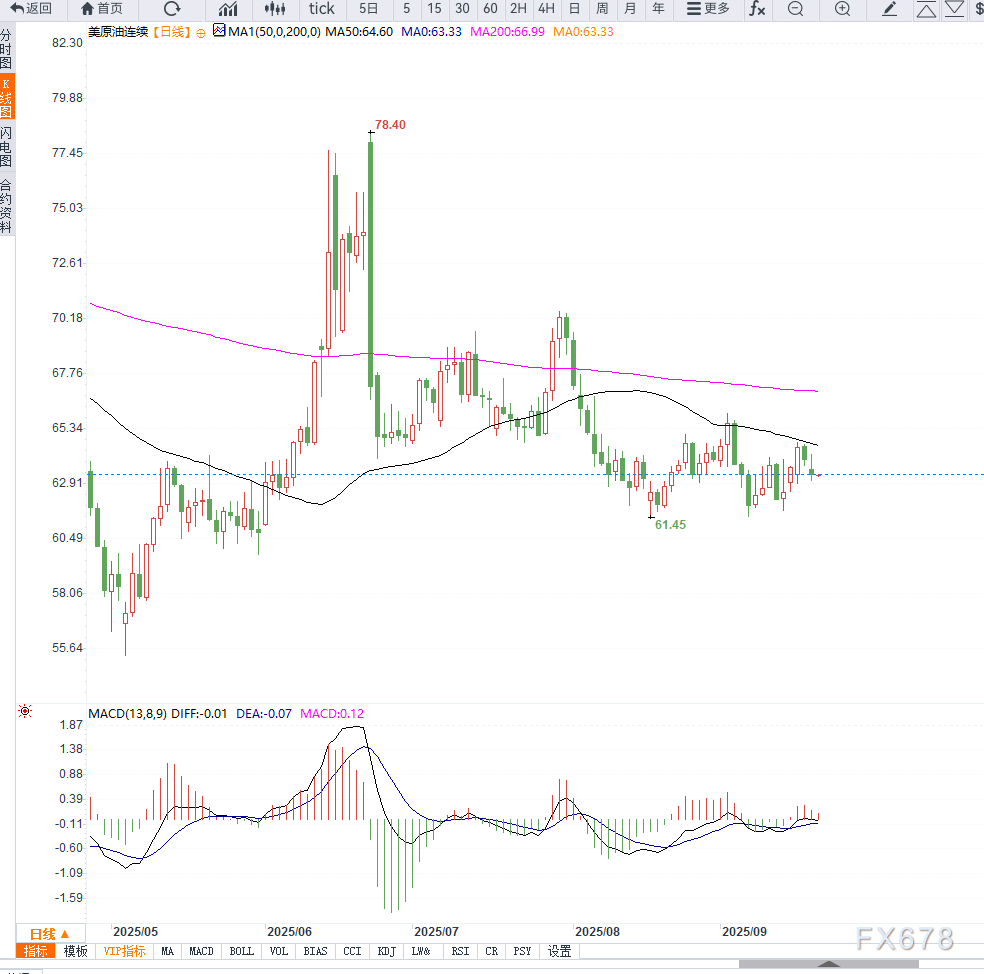Brent crude futures edged down 1 cent to $67.43 in early Asian trading on Friday, while WTI futures slipped 4 cents to $63.53. Both benchmark oil prices are still poised for a second consecutive weekly gain, but the overall trend remains directionless.
The Federal Reserve announced a 25-basis-point interest rate cut at its Wednesday meeting and signaled further easing to address weakness in the labor market. Typically, lower interest rates stimulate consumption and energy demand, thereby supporting oil prices.
However, an unexpected increase of 4 million barrels in U.S. distillate inventories (versus expectations of a 1-million-barrel rise) heightened concerns about demand, offsetting the positive impact of the policy move.

 Meanwhile, the U.S. dollar index rose by 0.43% to 97.37, appreciating against the Japanese yen to 147.95 and strengthening against the Swiss franc to 0.793. The stronger dollar, coupled with rising long-term U.S. Treasury yields, has collectively dampened the appeal of crude oil.
Meanwhile, the U.S. dollar index rose by 0.43% to 97.37, appreciating against the Japanese yen to 147.95 and strengthening against the Swiss franc to 0.793. The stronger dollar, coupled with rising long-term U.S. Treasury yields, has collectively dampened the appeal of crude oil.
Economic data also showed signs of weakness. The latest U.S. initial jobless claims figures indicated a softening labor market, with both labor supply and demand declining. Additionally, single-family home construction fell to its lowest level in nearly two and a half years, reflecting mounting pressure in the real estate market.
On the supply side, Russia’s Ministry of Finance, as the world’s second-largest oil producer, announced new measures to stabilize the budget against oil price volatility and external sanctions. This move has somewhat alleviated market concerns about potential supply disruptions.
Moreover, ANZ analyst Daniel Hynes stated, “President Trump’s remarks indicate a preference for maintaining low oil prices rather than intensifying sanctions on Russia, which has eased market concerns about supply disruptions in the short term.”
IG analyst Tony Sycamore noted, “The strengthening of the U.S. dollar and long-end yields has further undermined support for crude oil.”
From a technical perspective, Brent crude retreated after facing resistance near $68, with immediate support at $66.50. A break below this level could lead to a test of $65.20. WTI encountered resistance at the $64 mark and is currently consolidating above $63.
A breakout above USD 64.50 could lead to further testing of the USD 66 pressure level; however, a break below USD 62.80 may open the downside towards USD 61.50. Overall, the trend remains weak, with the consolidation pattern persisting.

Editor’s View:
Oil prices are currently facing a ‘dual contest.’ On one hand, the Fed’s rate cuts and accommodative policies theoretically support crude oil demand; on the other hand, US inventory data and sluggish macroeconomic indicators continue to weigh on prices.
The strengthening of the US dollar and rising Treasury yields have further compressed the rebound potential for oil prices. In the short term, WTI crude oil may oscillate within the range of USD 62.80 to USD 64.50, with direction still contingent upon US economic data and improvements in demand.
